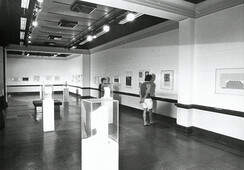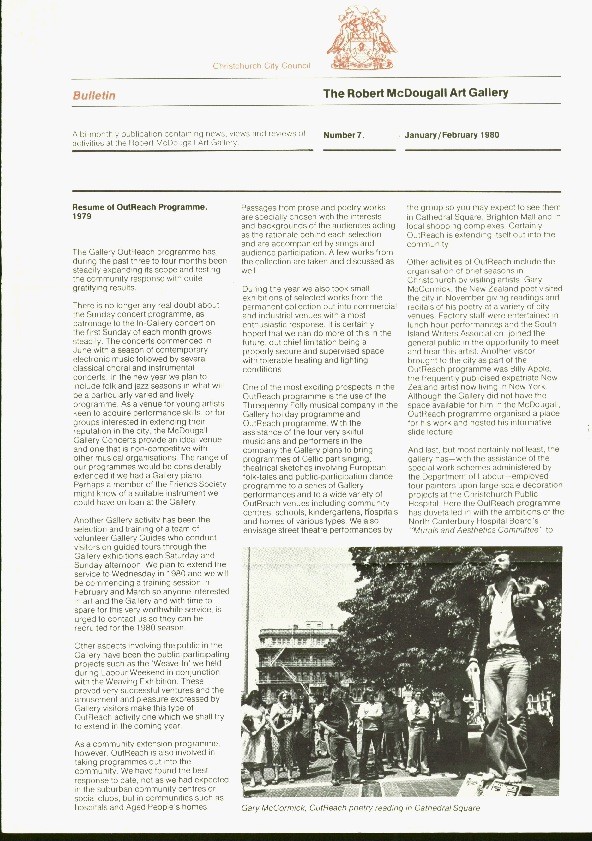This exhibition is now closed
Richard Smith
1 February –
28 February 1980

Richard Smith
Horizon 1 1970
Collection of the British Council
The work of Richard Smith, a British painter, is not widely known in New Zealand even though he enjoys an acclaimed reputation as a major innovator in Britain and America.
A product of the effervescent Britain of the '50s that produced British 'Pop', a world of Beatles, Rock'n'Roll, Carneby Row and the new wave fashions of Ossie Clark, with his talented Royal College friends David Hockney, Lawrence Alloway, Richard Hamilton and Peter Blake, Richard Smith was attracted to the excesses of popular culture Smith became aware that techniques of mechanical reproduction had radically altered our vision. People now perceived nature second hand, through the media – a world where the soft-focus blur of green in glossy ads for mentholated cigarettes metaphorically equated cool tobacco with the freshness of a spring landscape. This observation opened up the possibility of a representational art based, not on the observation of nature, but on the imitation of images generated through reproduction.
It was in New York, in the late '50s that Smith found the scale and stimuli he needed. While Claes Oldenburg celebrated the lower East side of Manhattan, Smith was drawn to the affluent pastel chic of Bonwit's windows (occasionally decorated by Andy Warhol who was later to become the mogul of American Pop), to brilliant Times Square billboards, colour photographs, cinemascope movies and the barrage of seductive advertising imagery. The random brush stroke techniques Smith used before New York gradually coalesced into patterns and shapes with soft edges, circular motifs reminiscent of spotlights on a stage bisected or quartered, capturing something of the excitement, the optimism, the rush and movement that Smith felt in New York. The paintings rapidly increased in size often taking on the form of environments, taut canvas over oddly built stretchers with protruding corners and sides.
In 1966, feeling the party was over, in an America torn by Race relations and the Vietnam war, Smith returned to Britain. There he developed his paintings to their distinctive 'kite' appearance – canvas stretched over aluminium rods with broad washes of applied colour. He also expanded his interest in related graphics and multiples which, with printing techniques and drawing, have always been analogous to processes and subjects in his paintings.
Visitors to this gallery between February 1 and 28, 1980 will have the opportunity to view retrospectively the multiples and prints produced by Richard Smith. Besides being provocative works in their own right, they provide an excellent means of examining how Smith forms his ideas for paintings.
Speaking of the relationship painting to printmaking Smith says, in the fully illustrated catalogue which accompanies the exhibition, "Painting, drawing and printmaking are all equally capable of incepting ideas which can transfer to other mediums, so though not necessarily as direct as painting prints or printing paintings the processes are closely bound."
('Richard Smith', Bulletin, No.7, January/February 1980, p.4)
Exhibition number 240A
Location:
Robert McDougall Art Gallery - main gallery
Exhibition number: 240A



